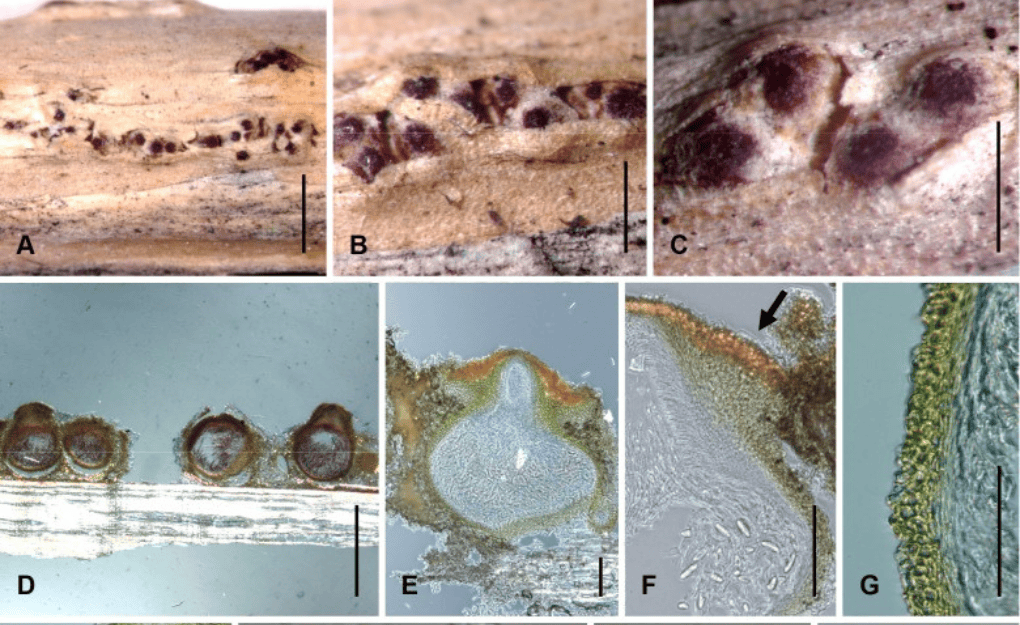Lichen Species Western Ghats have made headlines once again with the discovery of a unique species—Allographa effusosoredica. Found in the rich biodiversity hotspot of the Western Ghats, this new crustose lichen species underscores the ecological and evolutionary complexities of lichens and the need for deeper research in Indian mycology.
Recent Discovery and Significance of Lichen Species Western Ghats
A team of Indian scientists from the MACS-Agharkar Research Institute, Pune, has identified Allographa effusosoredica through an integrated approach involving classical taxonomy and advanced molecular techniques. This crustose lichen, which exhibits distinctive chemical and morphological traits, is the first Allographa species from India to be verified through DNA sequencing.
The species contains norstictic acid, a secondary metabolite not commonly found in related lichens. Its identification adds to the growing inventory of Graphidaceae species in India and strengthens the ecological importance of the Western Ghats—a UNESCO World Heritage Site and one of the eight “hottest hotspots” of biological diversity in the world.
Symbiotic Nature of Lichens
Lichens are extraordinary examples of symbiosis. They are not a single organism but rather a combination of a fungal partner (mycobiont) and a photosynthetic partner (photobiont), typically green algae or cyanobacteria. This symbiotic relationship enables lichens to colonize a wide range of environments—from arid deserts to rain-soaked forests.
In the case of Allographa effusosoredica, this mutualistic bond is essential for nutrient cycling and soil formation in forest ecosystems. Lichens also serve as bioindicators, reflecting the health of their surrounding environment, especially in terms of air quality and climate change.
Molecular Techniques and Taxonomy
To ensure the accurate classification of the new lichen, researchers used DNA sequencing involving multiple genetic markers:
- mtSSU (mitochondrial small subunit ribosomal DNA),
- LSU (large subunit ribosomal DNA),
- RPB2 (RNA polymerase II subunit B), and
- ITS (internal transcribed spacer, primarily for the algal partner).
The molecular data revealed that Allographa effusosoredica is closely related to Allographa xanthospora, despite bearing a visual resemblance to Graphis glaucescens. This finding challenges traditional classification methods and highlights the importance of molecular systematics in uncovering cryptic species and evolutionary relationships.
Photobiont Diversity and Local Adaptation
The photobiont identified in this study is Trentepohlia, a filamentous green alga commonly associated with tropical lichens. The choice of photobiont is not random—it is often a result of local adaptation and ecological compatibility. Such pairings improve survival chances, especially in microhabitats with fluctuating moisture, light, and temperature conditions.
The discovery enhances our understanding of photobiont diversity and adaptive evolution in lichenized fungi, especially in monsoon-dependent tropical ecosystems like the Western Ghats.
Contribution of Lichen Species Western Ghats to Indian Biodiversity Knowledge
With this discovery, Allographa effusosoredica becomes the 53rd species of Allographa recorded in India and the 22nd species from the Western Ghats. This not only reflects the region’s remarkable species richness but also points to the urgent need for more molecular research in Indian lichenology.
Such studies can reveal hidden diversity, correct misidentifications based solely on morphology, and inform conservation strategies aimed at protecting microhabitats.
Research Support and Future Directions
The study was financially supported by the Anusandhan National Research Foundation (ANRF). The multidisciplinary approach—blending taxonomy, molecular biology, and ecology—serves as a template for future biodiversity research. The researchers focused on two key families: Graphidaceae and Parmeliaceae, both critical for ecological functions in forested ecosystems.
Moving forward, scientists hope to:
- Expand molecular sampling across more regions,
- Investigate lichen community responses to climate change, and
- Promote conservation of lichen-rich habitats that are often overlooked in biodiversity management.
Conclusion
The discovery of Allographa effusosoredica reinforces the Western Ghats’ position as a global biodiversity treasure trove. With climate change and habitat loss threatening fragile ecosystems, the continued exploration and documentation of species like these are essential. Lichen Species Western Ghats is more than a headline—it’s a call to action for conservation, scientific collaboration, and ecological awareness.



